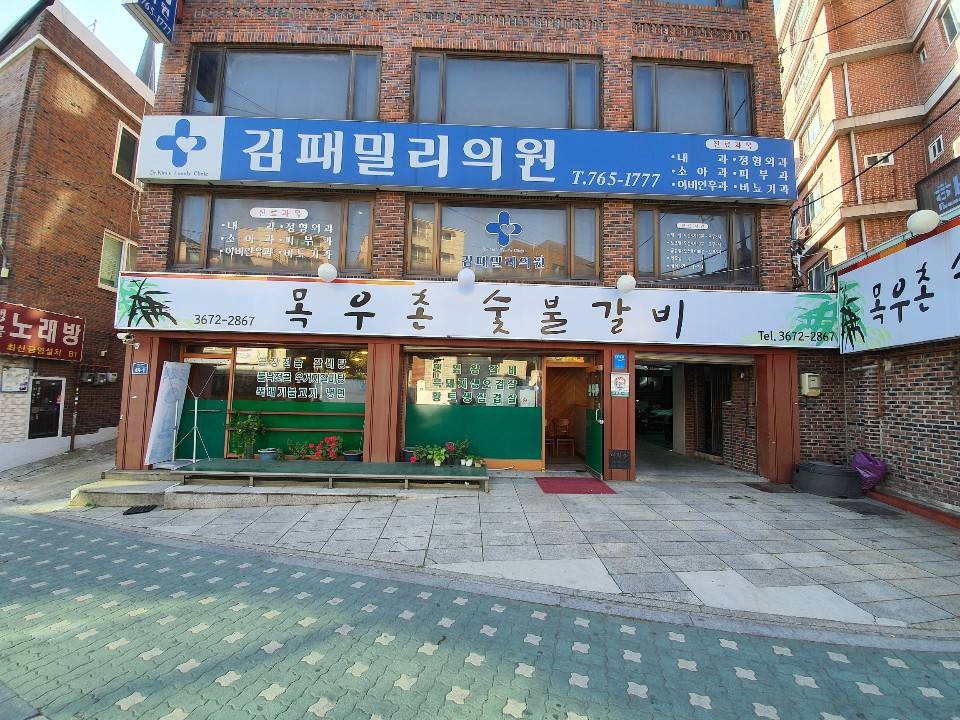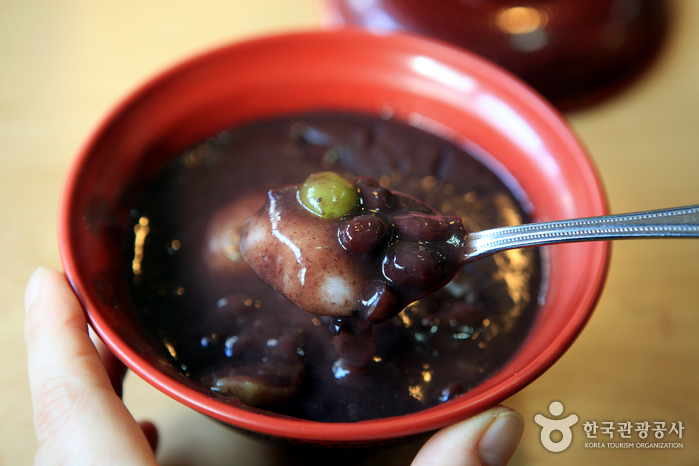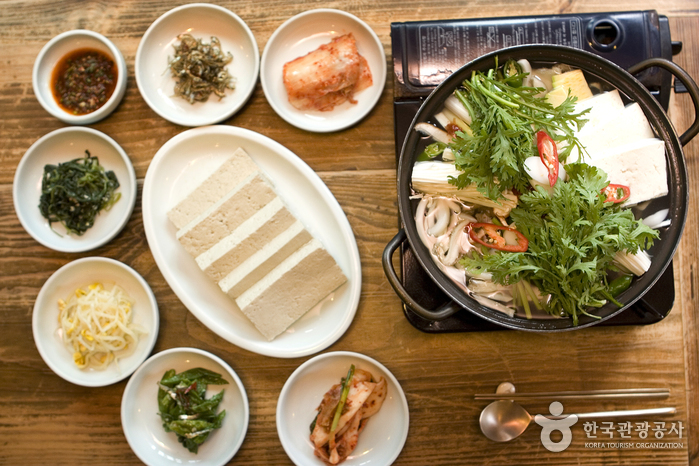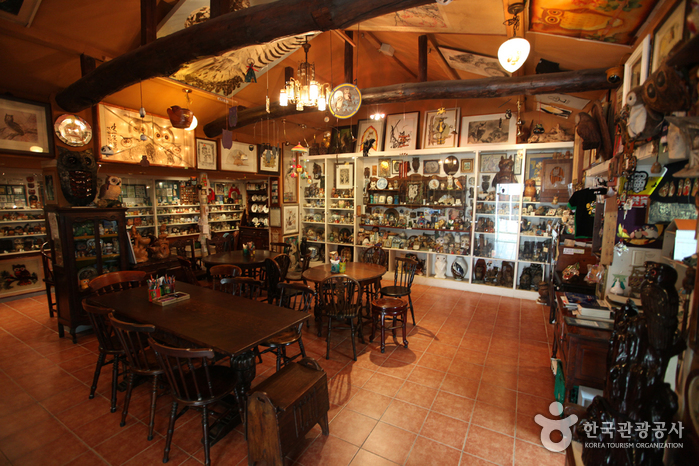Arboreto Irwol (일월수목원)
16.8Km 2025-04-25
Irwol-ro 61, Jangan-gu, Suwon-si, Gyeonggi-do
Moguchon Sutbulgalbi (목우촌숯불갈비)
16.8Km 2021-03-18
49-1, Seonggyungwan-ro, Jongno-gu, Seoul
+82-2-3672-2867
This is a Korean cuisine located in Jongno-gu, Seoul. A restaurant serving charcoal-grilled meat. The best menu at this restaurant is grilled boneless beef ribs.
Valle Suseong-dong (수성동계곡)
16.8Km 2025-04-18
Okin-dong 185-3, Jongno-gu, Seúl
Seoureseo Duljjaero Jalhaneunjip (The Second Best in Seoul) (서울서둘째로잘하는집)
16.9Km 2021-04-06
122-1, Samcheong-ro, Jongno-gu, Seoul
+82-2-734-5302
The delicious, sweet, red-bean soup called “Danpatjuk” in Korean and served at “The Second Best in Seoul” has been an all-time favorite since it opened in 1976. Not only the exterior, but the interior as well, is very simple and modest, similar to a teahouse in the '70s. This does not keep people from coming back because the unforgettable taste of the sweet red-bean soup makes them return again and again.
“The Second Best in Seoul” was originally opened as a teahouse for traditional Korean medicinal tea; sweet red-bean soup being one of the main specialties on their menu list. But, nowadays, sweet red-bean soup has become the most popular menu item. Sweet red-bean soup can be enjoyed as a light meal because it fills you up quickly. In addition, the chestnuts, gingko nuts, red beans, and glutinous rice cake that are in the thick red-bean soup provide good nutrition.
TIP: The name is very special, right? “The Second Best in Seoul” was named by their modest mind of making food with utmost sincerity.
Festival de América Latina (라틴아메리카 축제)
16.9Km 2024-08-22
Samseongyo-ro Jiha 1, Seongbuk-gu, Seúl
02-2241-6381/3/4
Bon PALETE (봉파레트)
16.9Km 2021-03-29
57-1, Seongbuk-ro, Seongbuk-gu, Seoul
+82-2-766-0827
You can enjoy delicious meals at a hanok restaurant. This Western dishes restaurant is located in Seongbuk-gu, Seoul. The representative menu is seafood pasta.
Onmaeul (온마을)
16.9Km 2025-07-18
127, Samcheong-ro, Jongno-gu, Seoul
A place that sells dishes made with beans, which are good for the health. This restaurant's signature menu is pureed soybean stew. This Korean dishes restaurant is located in Jongno-gu, Seoul.
Museo del Búho (부엉이박물관)
16.9Km 2022-09-19
Bukchon-ro 143, Jongno-gu, Seúl
El búho es considerado como un animal símbolo de la sabiduría. En los cuentos infantiles, muchas veces se ven a búhos con gafas y libros en sus alas. El museo está diseñado al estilo clásico, como una cafetería, y expone obras artísticas, artesanías, etc., alrededor de 2.000 piezas relacionadas con los búhos. Dichos artículos fueron coleccionados durante 30 años, recorriendo varios lugares del mundo, por Bae Myeong-hui (madre de los búhos), quien es la directora del museo.
Es un espacio peculiar, que fue reconstruido sobre una antigua casa, y los visitantes son recibidos calurosamente por la madre de los búhos, que también les sirve café o té. Al estar ubicado cerca del centro de la ciudad, es ideal para aquellos que deseen disfrutar un momento especial, observando las artesanías y obras artísticas. Además, otra fuente de diversión es escuchar historias sobre los búhos y los episodios relacionados con la colección.
Museo de Historia Natural de Seodaemun (서대문자연사박물관)
17.0Km 2025-05-21
Yeonhui-ro 32-gil 51, Seodaemun-gu, Seúl.
Es el primer Museo de Historia Natural construido por el gobierno coreano. Es educativo y enseña cómo convivir armoniosamente con la naturaleza. Todo el año organiza programas para niños y jóvenes sobre el tema de la naturaleza, siendo también un lugar de descanso para todos los ciudadanos. Muchas entidades gubernamentales de Asia visitan este lugar para hacer benchmarking. La sala 1 abarca el tema de "La naturaleza y el hombre"; la sala 2, "La evolución de la naturaleza"; y la sala 3 trata sobre la Tierra y el medio ambiente.
Darakjeong (다락정)
17.0Km 2021-03-26
131-1, Samcheong-ro, Jongno-gu, Seoul
+82-2-725-1697
Darakjeong has been popular for a long time because of the simple taste of its traditional Mandu (Korean stuffed dumpling). Since its opening in 1991, tasty soup and scrumptious Mandu have been served. A fist-sized Mandu is fully packed with seasoned meat, bean-curd, and various vegetables. Its thick dough makes it chewy and delightful. For one person, “Manduguk”(boiled dumpling soup) is a good choice. The delicious and nourishing taste of Mandu goes well with the sweet, spicy, and fresh taste of the soup. Manduguk is served in a brass bowl which keeps the food warm while eating. For a large-size group, “Mandujeongol” cooked with various vegetables in a casserole is recommended. There are two types of Mandujeongol that have different tastes. The main characteristic of “Kimchi Mandujeongol” is its spicy flavor, which reminds people of the refreshing taste of Kimchi soup, and “Tojang Mandujeongol” expounds on the savory taste of bean-paste soup. Tojang means folk soybean-paste. “Nokdujeon”(a Korean pan-fried dish with green mung bean) is another famous dish at Darakjeong, which is pan-fried with a very light seasoning to emphasize the original taste of Nokdu (green mung bean). Salted oysters with hot pepper are served with Nokdujeon instead of soy sauce, which is a perfect match.






 Español
Español
 한국어
한국어 English
English 日本語
日本語 中文(简体)
中文(简体) Deutsch
Deutsch Français
Français Русский
Русский